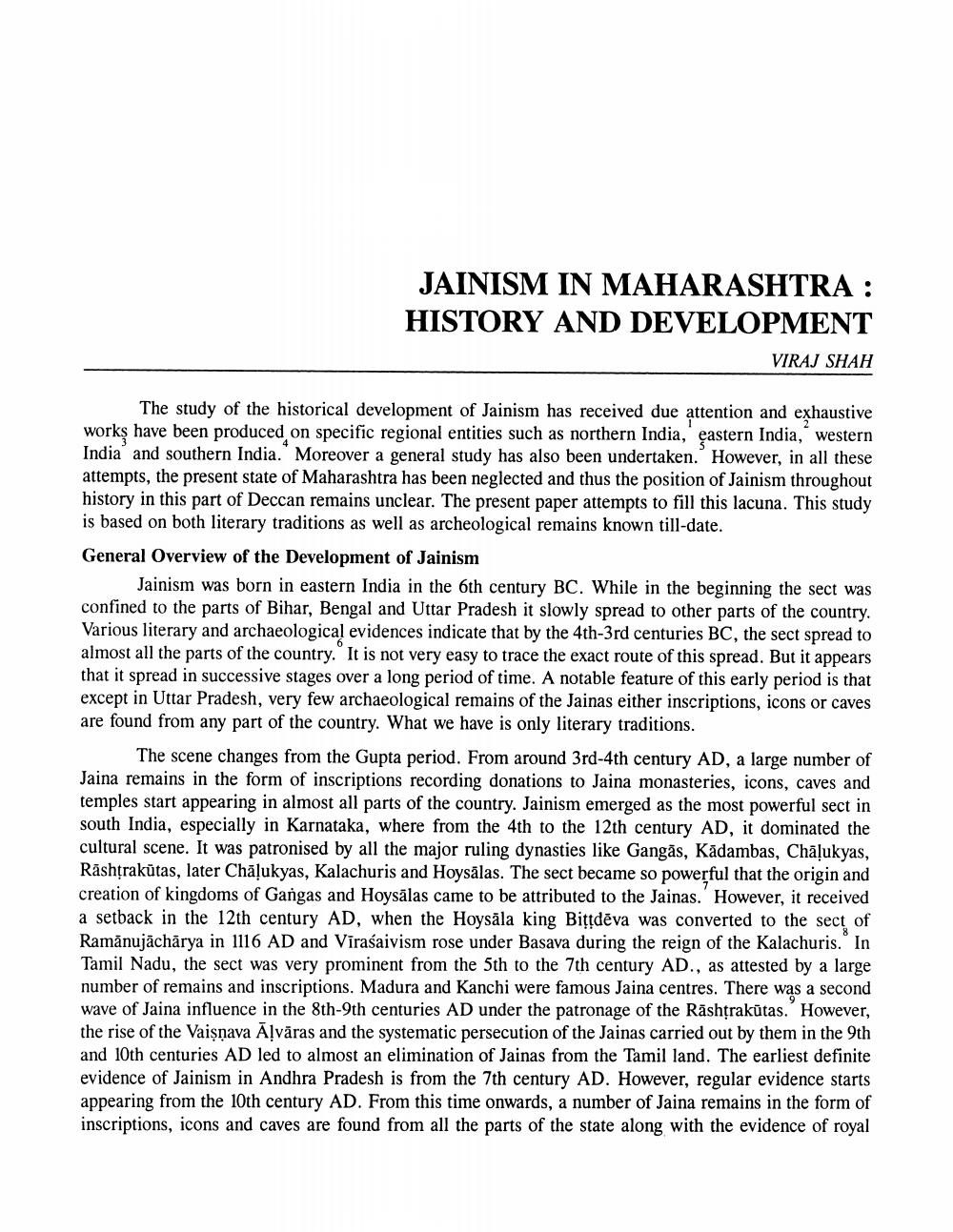________________
JAINISM IN MAHARASHTRA : HISTORY AND DEVELOPMENT
VIRAJ SHAH
The study of the historical development of Jainism has received due attention and exhaustive works have been produced on specific regional entities such as northern India, çastern India, western India and southern India. Moreover a general study has also been undertaken. However, in all these attempts, the present state of Maharashtra has been neglected and thus the position of Jainism throughout history in this part of Deccan remains unclear. The present paper attempts to fill this lacuna. This study is based on both literary traditions as well as archeological remains known till-date. General Overview of the Development of Jainism
Jainism was born in eastern India in the 6th century BC. While in the beginning the sect was confined to the parts of Bihar, Bengal and Uttar Pradesh it slowly spread to other parts of the country. Various literary and archaeological evidences indicate that by the 4th-3rd centuries BC, the sect spread to almost all the parts of the country. It is not very easy to trace the exact route of this spread. But it appears that it spread in successive stages over a long period of time. A notable feature of this early period is that except in Uttar Pradesh, very few archaeological remains of the Jainas either inscriptions, icons or caves are found from any part of the country. What we have is only literary traditions.
The scene changes from the Gupta period. From around 3rd 4th century AD, a large number of Jaina remains in the form of inscriptions recording donations to Jaina monasteries, icons, caves and temples start appearing in almost all parts of the country. Jainism emerged as the most powerful sect in south India, especially in Karnataka, where from the 4th to the 12th century AD, it dominated the cultural scene. It was patronised by all the major ruling dynasties like Gangās, Kādambas, Chāļukyas, Răshțrakūtas, later Chāļukyas, Kalachuris and Hoysālas. The sect became so powerful that the origin and creation of kingdoms of Gangas and Hoysālas came to be attributed to the Jainas. However, it received a setback in the 12th century AD, when the Hoysāla king Bittdēva was converted to the sect of Ramānujāchārya in 1116 AD and Virasaivism rose under Basava during the reign of the Kalachuris. In Tamil Nadu, the sect was very prominent from the 5th to the 7th century AD., as attested by a large number of remains and inscriptions. Madura and Kanchi were famous Jaina centres. There was a second wave of Jaina influence in the 8th-9th centuries AD under the patronage of the Rāshțrakūtas. However, the rise of the Vaişnava Āļvāras and the systematic persecution of the Jainas carried out by them in the 9th and 10th centuries AD led to almost an elimination of Jainas from the Tamil land. The earliest definite evidence of Jainism in Andhra Pradesh is from the 7th century AD. However, regular evidence starts appearing from the 10th century AD. From this time onwards, a number of Jaina remains in the form of inscriptions, icons and caves are found from all the parts of the state along with the evidence of royal




